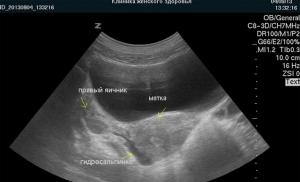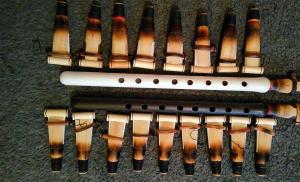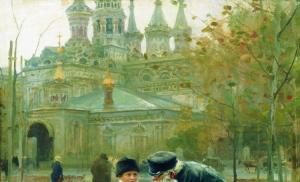The difference between steel and cast iron. Become
Modernity is iron. Those who understand know that the word "iron" refers to iron-carbon alloys - steel and cast iron. It would seem that two completely different materials and they are very easy to distinguish. However, given the wide range of their species and brands, it is difficult to determine the fine line of difference in the chemical composition of some of them. It is important to have additional skills in order to know the answer to the question: what is the difference between cast iron and steel?
Cast iron
Characteristics:
- Rough, having a gray matte color.
- Melting at 1000-1600˚С, depending on the composition (for industrial ones, on average - 1000-1200˚С, white and pig irons are melted at higher temperatures).
- Density: 7200-7600 kg/m 3 .
- 540 J/(kg˚C).
- High hardness: 400-650HB.
- Low ductility, very crumbly when exposed to pressure; malleable ductile cast iron δ=6-12% has the highest elongation values.
- Low strength: 100-200 MPa, for malleable it reaches 300-370 MPa, for some high-strength grades - 600-800 MPa.
- It is modeled using heat treatment, but rarely and with great care, since it is characterized by a cracking process.
- It is alloyed with the help of auxiliary chemical elements, however, a significant degree of alloying further complicates the technological processing.
- It is characterized by satisfactory weldability, good machinability, excellent casting properties. Forging and stamping is not subject.
- Good wear resistance and corrosion resistance.
Cast iron is a material for body parts, blocks, machine components made by casting. It is the main charge component for

Steel
An iron-carbon alloy containing carbon in an amount of not more than 2.14% and iron - not less than 45% is called steel. Its main characteristics:
- Smooth, has a silvery color with a characteristic sheen.
- Melting within 1450˚С.
- The density is from 7700 to 7900 kg/m 3 .
- Heat capacity at room temperature: 462 J/(kg˚C).
- Low hardness, on average 120-250 HB.
- Excellent ductility: the elongation coefficient δ for various grades ranges from 5-35%, for most - δ≥20-40%.
- Average values of tensile strength for structural materials - 300-450 MPa; for especially strong alloyed - 600-800 MPa.
- It lends itself well to the correction of properties with the help of thermal and chemical-thermal treatment.
- It is actively doped with various chemical elements in order to change properties and purpose.
- Qualitatively high rates of weldability, workability by pressure and cutting.
- It is characterized by low rates of corrosion resistance.
Steel is the main structural alloy in modern metallurgy, mechanical engineering, instrument making and technology.

We determine the origin by the type of part
Having considered the detailed characteristics of these alloys, you can confidently use the knowledge of how cast iron differs from steel. Having a metal object in front of you, doubting its origin, it is rational to immediately recall the main distinctive technological properties. So cast iron is a casting material. It is used to produce simple dishes, massive pipes, bodies of machine tools, engines, large objects of a simple configuration. Parts of all sizes and complexity are made from steel, since forging, stamping, drawing, rolling and other methods are used for this. Thus, if there is a question about the origin of reinforcement, there can be no doubt - this is steel. If you are interested in the origin of a massive cauldron - this is cast iron. If you need to find out what the engine or crankshaft housing is made of, you should resort to other recognition options, since both options are possible.

Color features and fragility analysis
In order to know how to distinguish cast iron from steel by eye, you need to remember the main visual differences. Cast iron has a matte gray color and a rougher outer texture. Steel is characterized by its special silvery lustrous tint and minimal roughness.
Also important knowledge on how to distinguish cast iron from steel visually is information about the ductility of these materials. If the investigated workpieces or metal objects are not of serious value, you can test them for strength and ductility by applying impact force. Brittle cast iron will crumble into pieces, while steel will only deform. With more serious loads aimed at crushing, cast iron crumbs will turn out to be small in various shapes, and pieces of steel will be large, of the correct configuration.

Cutting and drilling
How to distinguish cast iron from steel at home? It is necessary to get fine dust or chips out of it. Since steel has high ductility, its chips also have a tortuous character. Cast iron, on the other hand, crumbles; when drilling, small chips of fracture are formed along with dust.
To obtain dust, you can use a file or rasp and slightly sharpen the edge of the part of interest. Consider the resulting fine shavings on your hand or on a white sheet of paper. Cast iron contains carbon in large quantities in the form of graphite inclusions. Therefore, when rubbing its dust, a black graphite “trace” remains. In steels, carbon is in a bound state, so the mechanical effect on dust does not give any visible results.

Heat up and sparkle
How to distinguish cast iron from steel? You need to operate with the necessary equipment and a little patience.
In the first case, you can resort to heating, for example, with a blowtorch, initially dressed in special protective clothing and observing safety rules at work. The temperature must be raised before the metal begins to melt. It has already been said that the melting point of cast iron is higher than that of steel. However, this applies mainly to white and relatively all industrial grades - they contain carbon in an amount of not more than 4.3% and melt already at 1000-1200˚С. Thus, it can be melted much faster.
A cognitive method of obtaining information about how cast iron differs from steel is to use an experimental sample on a grinding machine or under a sharp circle of a grinding machine. The analysis is carried out according to the characteristics of the sparks. Cast iron is characterized by dim red sparks, and steel is characterized by bright blinding short rays with a white-yellow tint.
How does it sound
An interesting feature is how to distinguish cast iron from steel by sound. The two alloys sound different. It is not at all necessary to produce musical accompaniment on existing experimental objects. But it is necessary to have both samples or to have an experienced ear in this matter. Steel is characterized by a higher density, which is reflected in its sound. When hitting it with a metal object, the sound is much more sonorous than in the same situation with cast iron.

In order to know how cast iron differs from steel, you need to have a little knowledge about these materials and some experience. After all, an experienced professional in the field of forging, grinding, milling, drilling, turning, heat treatment or welding, a metallurgist or a technician can easily distinguish them from each other, evaluating only visually or by touch.
Cast iron is an alloy iron with carbon containing carbon from 2.14 to 6.67%.
Pig iron is obtained from iron ore with the help of fuel and fluxes.
Steel is an alloy iron with carbon containing up to 2.1% carbon.
Like cast iron, steel contains impurities of silicon, manganese, sulfur and phosphorus.
The main difference between steel and cast iron is that steel contains less carbon and impurities.
2. What kind of furnaces are used for steel smelting?
Cast iron is converted into steel in metallurgical units of various operating principles: open-hearth furnaces, oxygen converters, electric furnaces.
Open-hearth furnace (marten) - melting furnace for processing pig iron and scrap into steel of the desired chemical composition and quality.
Open-hearth furnace (Fig. 3) according to the device and principle of operation is a flame reflex regenerative furnace. Gaseous fuel or fuel oil is burned in the melting chamber. High temperature for obtaining steel in the molten state is provided by the heat recovery of furnace gases .
3. What is steel? What is cast iron?
Cast iron- cheap engineering material with good casting qualities. It is the raw material for steelmaking.
Steel-(from German Stahl) - an alloy (solid solution) of iron with carbon (and other elements), characterized by a eutectoid transformation.
4. What are the main mechanical properties of metals.
Mechanical properties may change over time. Many materials (single-crystal, oriented and reinforced plastics, fibers) are characterized by a sharp anisotropy of mechanical properties. Although the mechanical properties depend on the interaction forces between the particles (ions, atoms, molecules) that make up the substance, their direct comparison with structural characteristics is difficult due to crystal defects. structures and inhomogeneities inherent in real substances. Thus, the theoretical values of the tensile strength, which are ~ 0.1 of the Young's modulus of the substance, are 2-3 times higher than the values achieved for extremely oriented fibers and single crystals and hundreds of times for real structural materials.
According to mechanical properties, the following main types of materials are distinguished:
1) hard and brittle(cast iron, highly oriented fibers, stones, etc.), they are characterized by Young's moduli > 10 GPa and low elongations at break (up to several %);
2) hard and plastic(pl. plastics. mild steels, some non-ferrous metals), they are characterized by a Young's modulus > 2 GPa and high elongations at break;
3) elastomers(rubber) - low-modulus substances (equilibrium modulus of high elasticity of the order of 0.1-2 MPa), capable of huge reversible deformations (hundreds of%);
4) viscoplastic media, capable of unlimited deformations and retaining the shape given to them after the load is removed (clays, greases, concrete mixtures);
5) liquids, molten salts. metals, polymers, etc., capable of irreversible deformation (flow) and taking a given shape. Various intermediate cases of manifestation of mechanical properties are also possible.
25. Define steel and cast iron. How are they marked?
Become
Steels are divided: by application - into structural and tool; by chemical composition - into carbon and alloyed ones: by quality - into carbon ordinary quality, high-quality carbon structural, alloyed structural and low-alloyed structural. The properties of steel depend on the carbon content. The more carbon, the stronger, harder and less ductile the steel.
Structural carbon steel (used for the manufacture of machine parts and metal structures) of ordinary quality is marked: Art. Oh St. 1, Art. 2, Art. 7, high quality carbon steel - steel 10, 15, 20 ...... 60, 65, 70, high quality with a high manganese content - 15 G, 30 G, 50G2 and etc.
In a quality steel grade, the numbers indicate the average carbon content in hundredths of a percent (for example, steel 50 contains up to 0.5% carbon). Tool carbon steel is used for the manufacture of metal and woodworking tools and dies. Steel is marked with the letter U and a number indicating the amount of carbon. For example, U8A means: carbon tool steel containing 0.8% carbon, high quality, since the letter A is indicated at the end of the grade.
cast iron are used for the manufacture of cast shaped blanks. There are white cast irons (up to 4% carbon), gray (up to 3.6%), malleable, high-strength, anti-friction and alloyed.
Malleable cast iron is obtained from white cast irons by long exposure at high temperature - languishing, characterized by high strength and ductility.
27. What alloying elements are added to steel and how to decipher their grades. For example: Art.45khzncha?
Become- an alloy of iron with carbon, the content of which does not exceed 2.3%, as well as with other natural alloying additives or introduced for a specific purpose.
Alloy steel contains additives in its composition that give it special properties - increased wear resistance, temperature resistance, corrosion resistance, etc. The following are used as alloying additives: tungsten - B, chromium - X, nickel - H, silicon - C, molybdenum - M , titanium - T, vanadium - F, boron - P, aluminum - Yu, etc.
The grade of alloy steel is indicated by multi-digit numbers (table 1.1). The numbers after the letters indicate the percentage of components; if it does not exceed one percent, then the number after the letter is not put. For example, brand 25ХЗН4А stands for - high-quality chromium-nickel steel containing up to 0.25% carbon, 3% chromium and 4% nickel. Steel casting is marked as follows: Steel 25L, 35L, etc. The mechanical properties of steels (especially fatigue strength) increase with bulk and surface thermal (annealing, normalization, hardening, tempering) or chemical-thermal treatment (carburizing, nitriding).
Steel- an alloy of iron (Fe> 90%) with carbon (C up to 2.14%). Steels are widely used in mechanical engineering and construction.
Steel differs from cast irons in a lower percentage of carbon and all permanent impurities.
Steels are softer and more ductile than cast irons.
In addition to iron and carbon, steels and cast irons always contain silicon (Si), manganese (Mn), sulfur (S), phosphorus (P) and gases - oxygen, nitrogen, hydrogen (O, N, H). These impurities are called permanent.
In addition to permanent impurities in steels and cast irons, other elements may also be randomly contained, which are called random impurities(from ore, scrap).
Sometimes chemical elements are specially introduced into iron-carbon alloys to change their structure and properties - chromium (Cr), nickel (Ni), molybdenum (Mo), tungsten (W), titanium (Ti). Such impurities are called alloying, and the corresponding alloys are alloyed.
Classification by chemical composition
The chemical composition of steel is divided into:
carbonaceous
alloyed
carbonaceous- steel, whose properties depend mainly on the carbon content. Such steels, in turn, are divided into:
Low carbon - C<0,25%
Medium carbon - 0.25%
alloyed- steel, which includes specially introduced elements to give it the required properties.
Classification by purpose
Steel is divided according to its purpose into:
Structural
Instrumental
Structural steels are intended for the manufacture of machine parts, instruments and elements of building structures.
Instrumental steels are used for the manufacture of cutting, measuring tools, dies for cold and hot deformation.
Special purpose steels- stainless (corrosion-resistant), heat-resistant, heat-resistant, wear-resistant, etc.
Quality classification
Steels are subdivided on this basis into:
Standard quality steel
quality
high quality
Particularly high quality
Under quality here is understood the totality of the properties of steel, determined by the metallurgical process of its production.
Classification according to the degree of deoxidation
According to the degree of deoxidation, steels are classified into:
Calm
semi-calm
Boiling
When marking such steels, the letters "kp" are written at the end of the boiling steel grade, the letters "ps" are written at the end of the semi-calm steel grade.
Deoxidation- the process of removing oxygen from liquid steel. Undeoxidized steel has insufficient ductility and is prone to destruction during hot working.
Structure classification
Steels are classified in the state after annealing and normalization. In the annealed (equilibrium) state, steels are divided into:
Hypoeutectoid having excess cementite in the structure
eutectoid, whose structure consists of perlite
Zautectoid, in the structure of which there are secondary carbides precipitated from austenite
Ledeburite, the structure of which contains primary (eutectic) carbides
Austenitic
ferritic
Steel marking
At the end of the brand of boiling steel, the letters "kp" are written, and the letters "ps" are written in semi-calm steel.
Alloying elements are indicated by the letters: H (nickel), K (cobalt), G (manganese), X (chromium), V (tungsten), M (molybdenum), Yu (aluminum), C (silicon), F (vanadium), P (boron). The letters are written after the number indicating the carbon content. If there is no number after the letter, then the content of the alloying element in the steel is 1-1.5%. An exception is made for molybdenum and vanadium, the content of which in most steels is 0.2-0.3%.
If the alloying element in the steel is more than 1.5%, then the number after the letter indicates its content as a percentage. For example, grade 15X denotes steel having an average of 0.15% C and 1-1.5% Cr, steel 35G2 - 0.35% C and 2% Mn.
The difference in the designation of high-quality steels from high-quality steels is that the letter A is assigned to the end of the high-quality steel grade. For example, 40XHNM steel is high-quality, and 40XHNMA steel is high-quality. If the steel is especially high-quality, then the letter Sh is written at the end of the grade.
For steels used in the form of casting (in casting), the letter L is placed at the end of the grade.
Ball-bearing chromium steels are indicated at the beginning with the letters ШХ, the chromium content in these steels is indicated in tenths of a percent, and the carbon content, which is the same for different chromium contents, is not indicated. For example, steel ШХ15 contains on average 1% C and 1.5% Cr.
High-speed steels are designated by the letter P (cutting). The number following the letter indicates the content of the main alloying element for these steels - tungsten.
Example: R6M5K4 - high speed steel with tungsten content 6%, molybdenum 5%, cobalt 4%.
Electrical steels (transformer) are designated by the letter E. The number following the letter indicates the content of the alloying element - silicon - as a percentage.
According to the SAE brand (USA), structural steels: carbon and alloyed with one and two elements are indicated by four digits. The first digit indicates the main alloying element, the second - its content in percent, the third and fourth - the carbon content in hundredths of a percent. The first digit 1 is adopted to designate carbon steels; then the second digit is 0. The first digits: 2 denotes nickel steels; 3 - nickel with chromium; 4 - molybdenum; 5 - chromium; 6 - chromium with vanadium; 7 - tungsten; 8 - vanadium; 9 - siliceous with manganese.
For example, steel 1045 corresponds to steel 45 according to GOST; steel 5140 - steel 40X, etc. For steels alloyed with a large number of elements, a more complex designation is adopted.
Cast iron and steel - two types of compounds of iron with carbon - are widely used in a wide variety of industries. But sometimes it becomes necessary to distinguish cast iron from steel, for example, during repairs, because these alloys have different properties and, accordingly, require different handling.
Methods for determining cast iron
You can identify cast iron by the density of the product. Weigh the object, and then determine how much water it displaces. Thus, you will calculate its density and draw a conclusion about the material. The fact is that the density of the main steel grades lies in the range of 7.7 - 7.9 grams / cm ^ 3, while the density of the most common gray cast iron does not exceed 7.2 grams / cm ^ 3. But this method is unreliable, since there is also white cast iron, the density of which varies between 7.6 and 7.8 grams / cm ^ 3. Therefore, it can only be used if you are firmly convinced that the product is made of either steel or gray cast iron.
You can use a magnet. It adheres worse to cast iron than to steel. But even this method cannot be called accurate, since some types of alloyed steels with a high nickel content almost do not attract a magnet.
Therefore, it is more reliable to use one of the following methods: to determine cast iron using the type of sawdust or chips formed, as well as using a grinder. Take a file with a fine notch, swipe several times over the surface of the product. Try to collect the resulting smallest sawdust on a sheet of paper. Fold the paper in half and rub vigorously. If it is cast iron, then the paper will be noticeably dirty, if it is steel, there will be practically no traces left.
You can also drill the product a little with a thin drill (of course, not from the front side, but in a place that is not conspicuous). In this case, no a large number of shavings. By its appearance and properties, you can accurately determine what material the part is made of. If it is cast iron, the chips will literally crumble in your fingers, turning into dust. If it's steel, the shavings will look like a coiled spring and may even scratch your fingers if you try to break them.
Finally, one can judge the material by the size, shape and color of the sparks that form when a grinder is run along the edge of the product. The higher the carbon content, the brighter and stronger the sheaf of light yellow sparks will be. And the carbon content in cast iron is much higher than in steel.
If in doubt, it is better to use pieces of cast iron and steel as standards and compare the shape and properties of sawdust (chips), as well as the type of sparks formed, with what is obtained when processing these samples.
What is the difference between steel and cast iron?
- Gradation of steel and cast iron
- Steel
- Cast iron
- Corrosion resistance
Cast iron and steel products of the metallurgical industry are used both in everyday life and in production. Both materials are unique alloys of iron and carbon. Everyone knows that iron is mined from the depths of the earth in huge quantities. But it is impossible to use it in its pure form, this element is too soft, and therefore unsuitable for the manufacture of high-strength products. Therefore, for industrial, construction and domestic purposes, not pure iron is used, but its derivatives - cast iron and steel. How is steel different from cast iron?

Cast iron and steel are alloys of iron and carbon.
Their difference is manifested in many qualities, and the commonality of the elements during production does not give the material identical characteristics.
Gradation of steel and cast iron
Back to index

Scheme of steel production.
To obtain steel, iron is alloyed with carbon and various impurities. A prerequisite is the carbon content of not more than 2% (it increases strength), and iron - not less than 45%. The remaining part is made up of alloying binding components (chromium, molybdenum, nickel, etc.). Chromium increases the strength of steel, its hardness and wear resistance. Nickel increases strength, toughness and hardness. improves its anti-corrosion properties and hardenability. Silicon adds strength, hardness and elasticity to steel, reduces its toughness. Manganese improves weldability and hardenability. Metallurgists emit different types become. Classify them depending on the volume of the remaining elements. For example, the content of more than 11% of alloying metals gives high alloy steel. There is also:
- Low alloy steel - up to 4%.
- Medium alloy steel - up to 11%.

Mechanical properties of steel.
According to the amount of carbon, steel is classified into:
- low-carbon metal - up to 0.25% C;
- medium carbon metal - up to 0.55% C;
- high-carbon metal - up to 2% C.
The composition of non-metallic elements (phosphides, sulfides) classifies the metal into:
- ordinary;
- quality;
- high quality;
- especially high quality steel.
As a result, all types of steel are a strong, wear-resistant and deformation-resistant alloy with a melting point of 1450 to 1520 °C.
Back to index
In the production of iron, iron and carbon are also fused. The main difference between cast iron and steel is the content of the latter in the mixture. It should be more than 2%. In addition, the mixture contains impurities: silicon, manganese, phosphorus, sulfur and alloying metals. Cast iron is more brittle than steel and breaks without visible deformation. Carbon in the metal is represented by graphite or cementite, while the volume and shape of the element determine the types of alloy:

- White cast iron, in which the entire volume of carbon is represented by cementite. This material is white when fractured, very hard, but brittle. It is easy to process and is used for the production of a malleable variety.
- Gray - carbon is represented by graphite, which gives the material plasticity. Soft, easy to cut, low melting point.
- Malleable, which is obtained from white cast iron by special annealing (languishing) in special heating furnaces at a temperature of 950-1000 ° C. At the same time, the excessive brittleness and hardness characteristic of white cast iron are greatly reduced. Malleable cast iron is not forged, and the name indicates only its ductility.
- Ductile iron containing nodular graphite formed during the crystallization process.
The amount of carbon in the alloy determines its melting point (the higher the content of the element, the lower the temperature and the higher the fluidity during heating). Therefore, cast iron is a fluid, non-ductile, brittle and difficult-to-work material with a melting point of 1150 to 1250 °C.
Back to index
Corrosion resistance
Both alloys are prone to corrosion, and improper operation will accelerate this process.

Obtaining pig iron from ore.
Cast iron in the process of use is covered with dry rust on top. This is the so-called chemical corrosion. Wet (electrochemical) corrosion attacks cast iron more slowly than steel. Initially, the conclusion suggests itself that the anti-corrosion characteristics of cast iron are much higher. In fact, both of these alloys are equally susceptible to corrosion, it's just that in relation to cast iron products, due to thick walls, the process takes longer. This, for example, can explain the difference in the service life of boilers: steel - from 5 to 15 years, cast iron - from 30 years.
In 1913, Harry Brearley made a discovery in the field of metallurgy. He found that high chromium steel had good resistance to acid corrosion. This is how stainless steel was born. It also has its own gradation:
- Corrosion-resistant steel is resistant to corrosion in elementary industrial and domestic conditions (oil and gas, light industry, engineering industry, surgical instruments, household stainless utensils).
- Heat-resistant steel is resistant to high temperatures and aggressive environments (chemical industry).
- Heat-resistant steel is characterized by increased mechanical strength at high temperatures.
Back to index
Thermal shock and impact resistance

Comparative indicators of cast iron and steel.
Cast iron and steel are often used in the manufacture of heating boilers. In this case, the issue of resistance to thermal shock becomes especially important. If cold water gets into a hot cast-iron boiler, it may crack. Thermal shock is not terrible for steel products. Steel is more elastic and perfectly tolerates temperature differences. But large and frequent temperature drops in steel contribute to the appearance of “tired” zones and, as a result, cracks in places that are weakened by welding.
Good ductility makes steel products resistant to mechanical damage. The brittleness of cast iron inevitably leads to the formation of cracks during impacts or distortions.
Gray cast iron has a more uniform structure, increased ductility and anti-corrosion properties, and is able to withstand large temperature fluctuations.
- Cast iron is less durable and hard than steel.
- Steel is heavier and has a higher melting point.
- The lower carbon content in steel, unlike cast iron, makes it easier to process (cook, cut, forge).
- For a similar reason, cast iron products are produced only by casting, while steel products can be forged and welded.
- Steel products are less porous than cast iron, and therefore their thermal conductivity is much higher.
- Products made of cast iron are, as a rule, black and have a matte surface, while those made of steel are light with a shiny surface.
Back to index
- According to the density of the product. It is necessary to weigh the object and determine how much water it will displace. The density of steel lies in the range of 7.7-7.9 g / cm³, gray cast iron - does not exceed 7.2 g / cm³. This method is not particularly reliable because white cast iron has a density between 7.6 and 7.8 g/cm³.
- With the help of a magnet. Cast iron is less magnetic than steel. The disadvantage of this method is that steels with a high nickel content practically do not attract a magnet.
- The most accurate way is to determine the cast iron using a grinder and the type of chips formed. You should take a file with a fine notch and draw it over the surface of the object several times. The resulting sawdust must be collected on paper, folded in half and rubbed vigorously. Cast iron will noticeably stain paper, steel will leave virtually no marks.
You can draw conclusions about the material by the size, shape and color of the sparks that appear during grinding. The more carbon, the brighter and stronger the sheaf of light yellow sparks will be. As we already know, cast iron contains more carbon than steel. Also, when drilling a product with a thin drill, you can determine the material by the type of chips. Cast iron shavings literally turn into dust before our eyes, steel shavings will take on the form of a twisted spring.
What is the visual difference between cast iron and steel?
October 21, 2016
An uninformed person believes that the main structural material of our time is iron. The one who understands knows that under the word "iron9raquo; This refers to iron-carbon alloys - steel and cast iron. It would seem that two completely different materials and they are very easy to distinguish. However, given the wide range of their species and brands, it is difficult to determine the fine line of difference in the chemical composition of some of them. It is important to have additional skills in order to know the answer to the question: what is the difference between cast iron and steel?

- Rough, having a gray matte color.
- Melting at 1000-1600˚С, depending on the composition (for industrial ones, on average - 1000-1200˚С, white and pig irons are melted at higher temperatures).
- Density: 7200-7600 kg/m 3 .
- Specific heat capacity: 540 J/(kg˚C).
- High hardness: 400-650HB.
- Low ductility, very crumbly when exposed to pressure; malleable ductile cast iron δ=6-12% has the highest elongation values.
- Low strength: 100-200 MPa, for malleable it reaches 300-370 MPa, for some high-strength grades - 600-800 MPa.
- It is modeled using heat treatment, but rarely and with great care, since it is characterized by a cracking process.
- It is alloyed with the help of auxiliary chemical elements, however, a significant degree of alloying further complicates the technological processing.
- It is characterized by satisfactory weldability, good machinability, excellent casting properties. Forging and stamping is not subject.
- Good wear resistance and corrosion resistance.
Cast iron is a material for body parts, blocks, machine components made by casting. It is the main charge component for steel smelting.

An iron-carbon alloy containing carbon in an amount of not more than 2.14% and iron - not less than 45% is called steel. Its main characteristics:
- Smooth, has a silvery color with a characteristic sheen.
- Melting within 1450˚С.
- The density is from 7700 to 7900 kg/m 3 .
- Heat capacity at room temperature: 462 J/(kg˚C).
- Low hardness, on average 120-250 HB.
- Excellent ductility: the elongation coefficient δ for various grades ranges from 5-35%, for most - δ9ge; 20-40%.
- Average values of tensile strength for structural materials - 300-450 MPa; for especially strong alloyed - 600-800 MPa.
- It lends itself well to the correction of properties with the help of thermal and chemical-thermal treatment.
- It is actively doped with various chemical elements in order to change properties and purpose.
- Qualitatively high rates of weldability, workability by pressure and cutting.
- It is characterized by low rates of corrosion resistance.
Steel is the main structural alloy in modern metallurgy, mechanical engineering, instrument making and technology.

We determine the origin by the type of part
Having considered the detailed characteristics of these alloys, you can confidently use the knowledge of how cast iron differs from steel. Having a metal object in front of you, doubting its origin, it is rational to immediately recall the main distinctive technological properties. So cast iron is a casting material. It is used to produce simple dishes, massive pipes, bodies of machine tools, engines, large objects of a simple configuration. Parts of all sizes and complexity are made from steel, since forging, stamping, drawing, rolling and other methods of metal forming are used for this. Thus, if there is a question about the origin of reinforcement, there can be no doubt - it is steel. If you are interested in the origin of a massive cauldron - this is cast iron. If you need to find out what the engine or crankshaft housing is made of, you should resort to other recognition options, since both options are possible.

Color features and fragility analysis
In order to know how to distinguish cast iron from steel by eye, you need to remember the main visual differences. Cast iron has a matte gray color and a rougher outer texture. Steel is characterized by its special silvery lustrous tint and minimal roughness.
Also important knowledge on how to distinguish cast iron from steel visually is information about the ductility of these materials. If the investigated workpieces or metal objects are not of serious value, you can test them for strength and ductility by applying impact force. Brittle cast iron will crumble into pieces, while steel will only deform. With more serious loads aimed at crushing, cast iron crumbs will turn out to be small in various shapes, and pieces of steel will be large, of the correct configuration.

Cutting and drilling
How to distinguish cast iron from steel at home? It is necessary to get fine dust or chips out of it. Since steel has high ductility, its chips also have a tortuous character. Cast iron, on the other hand, crumbles; when drilling, small chips of fracture are formed along with dust.
To obtain dust, you can use a file or rasp and slightly sharpen the edge of the part of interest. Consider the resulting fine shavings on your hand or on a white sheet of paper. Cast iron contains carbon in large quantities in the form of graphite inclusions. Therefore, when rubbing its dust, a black graphite “trace” remains. In steels, carbon is in a bound state, so the mechanical effect on dust does not give any visible results.

Heat up and sparkle
How to distinguish cast iron from steel? You need to operate with the necessary equipment and a little patience.
In the first case, you can resort to heating, for example, with a blowtorch, initially dressed in special protective clothing and observing safety rules at work. The temperature must be raised before the metal begins to melt. It has already been said that the melting point of cast iron is higher than that of steel. However, this applies mainly to white and pig irons. Regarding all industrial grades, they contain carbon in an amount of not more than 4.3% and melt already at 1000-1200˚С. Thus, it can be melted much faster.
A cognitive method of obtaining information about how cast iron differs from steel is to use an experimental sample on a grinding machine or under a sharp circle of a grinding machine. The analysis is carried out according to the characteristics of the sparks. Cast iron is characterized by dim red sparks, and steel is characterized by bright blinding short rays with a white-yellow tint.
How does it sound
An interesting feature is how to distinguish cast iron from steel by sound. The two alloys sound different. It is not at all necessary to produce musical accompaniment on existing experimental objects. But it is necessary to have both samples or to have an experienced ear in this matter. Steel is characterized by a higher density, which is reflected in its sound. When hitting it with a metal object, the sound is much more sonorous than in the same situation with cast iron.

In order to know how cast iron differs from steel, you need to have a little knowledge about these materials and some experience. After all, an experienced professional in the field of forging, grinding, milling, drilling, turning, heat treatment or welding, a metallurgist or a technician can easily distinguish them from each other, evaluating only visually or by touch.

11 Weird Signs That You're Good in Bed Do you also want to believe that you're giving your romantic partner pleasure in bed? At least you don't want to blush and apologize.

9 Famous Women Who Have Fallen In Love With Women Showing interest in someone other than the opposite sex is not unusual. You can hardly surprise or shock someone if you admit it.

What does the shape of your nose say about your personality? Many experts believe that by looking at the nose, you can tell a lot about a person's personality. Therefore, at the first meeting, pay attention to the nose is unfamiliar.

Contrary to all stereotypes: a girl with a rare genetic disorder conquers the fashion world This girl's name is Melanie Gaidos, and she burst into the fashion world swiftly, shocking, inspiring and destroying stupid stereotypes.

Never do this in a church! If you're not sure if you're doing the right thing in church or not, then you're probably not doing the right thing. Here is a list of the terrible ones.

Why do you need a tiny pocket on jeans? Everyone knows that there is a tiny pocket on jeans, but few have thought about why it might be needed. Interestingly, it was originally a place for Mt.
How to distinguish between cast iron and cast steel
The difference between iron scrap and steel scrap is not only in chemical composition, but also visual. To test the difference, you will need a grinding wheel, a piece of metal, a blowtorch, a protective mask and gloves.
Physical properties of cast iron and cast steel
Metals can be distinguished by their appearance. Cast iron is rough and dull gray in color, while cast steel is smooth and silver gray in color.
spark test
You will need two small pieces of each metal. Press the grinding wheel against the edge of each metal and note the color of the sparks that form. Steel will create brilliant white sparks while cast iron will generate dull red sparks.
Crushing test
Take a small piece of each metal and try to crush it. You will see cast iron break randomly while cast steel will shatter into long, smooth thin pieces with little or no effort.
Melting test
For this test you get a small piece from each metal to melt. Put on protective gear and melt the metal with a blowtorch. The more carbon in the metal, the harder the metal becomes. You will see that the cast iron melts faster and turns red. Cast steel takes longer to melt and turns white when melted.
Brittleness test
Drop a thin piece of each of the metals and drop it to the ground with some force. Cast iron will break into many pieces, while steel will not break, or break into two pieces. This is because cast iron is more brittle than steel.
Find a place that is not conspicuous on the part and go over the metal several times with a needle file or a small file. Rub the resulting sawdust in your fingers. Regular cast iron will leave a characteristic graphite black color on the skin.
It will be even clearer if you rub the sawdust between sheets of white paper. Steel filings will not stain paper.
You can determine whether cast iron is in front of you or steel - empirically: by the color and shape of the spark.
Turn on the grinder and take two parts or blanks known to you: steel and cast iron. Spark them one by one and compare. After that, go through the details in which you doubt in the same way. Make a conclusion based on the greatest analogy with the samples.
Sparks that occur during the grinding of steel are the smallest molten metal particles that fly tangentially to the circumference of the circle at the point of contact with the part.
In the presence of carbon in the metal, hot particles, in contact with air, are oxidized, carbon turns into carbon dioxide. In this case, very numerous sparks with short rays are formed.
In cast iron, the spark will be a bright straw color.
Take a drill and insert a small diameter drill into it. Determine a secluded place on the part and drill a little.
Firstly, the process of drilling a cast iron part is different from drilling in steel. To get a better feel for the difference, do similar drills on cast iron and steel samples you know.
Secondly, when drilling cast iron, almost no chips are formed. And if it is formed, it is very short and it is easily rubbed with fingers into dust. Steel shavings are twisted like wire, and you can’t break it with your fingers.
You can also check the type of metal by turning it on a lathe - for cast iron, the chips will be coarse dust.
Attention, only TODAY!













